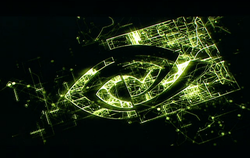
Sept. 29, 2016
By: Michael Feldman
At NVIDIA’s first European GPU Technology Conference (GTC Europe) taking place in Amsterdam this week, CEO Jen-Hsun Huang announced a number of new users of the DGX-1 GPU-powered “supercomputer in a box.” Huang also teased attendees with an early look at one of their next-generation Volta GPUs designed to power self-driving cars.
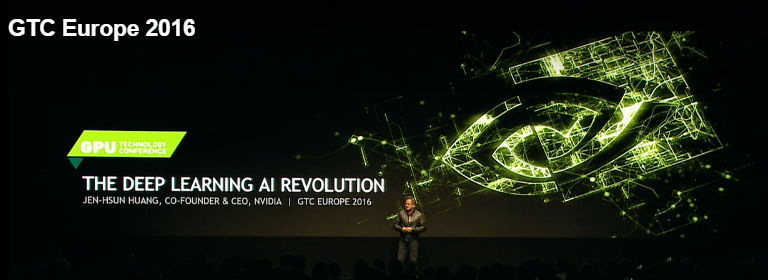
The DGX-1 is the company’s Pascal GPU-based server, which houses eight P100 processors representing about 170 half-precision (FP16) teraflops -- the kind most appropriate for training the deep neural networks that the system is designed for. As one of the rare examples of server hardware designed and built by NVIDIA, the DGX-1 was developed for the purpose of seeding Pascal technology across the AI community. The expectation is that eventually OEMs will build Pascal-based systems to serve these customers, but the GPU-maker felt it necessary to offer a development platform to prime that market.
Apropos of this week’s GTC venue, the new DGX-1 users announced by Huang were based in Europe, starting with two major AI research centers located in Germany and Switzerland, respectively. NVIDIA has entered into collaboration partnerships with both organizations -- the German Research Center for Artificial Intelligence (DFKI) and Switzerland’s Dalle Molle Institute for Artificial Intelligence (IDSIA) -- offering four years of research funding and a DGX-1 system, presumably free of charge.
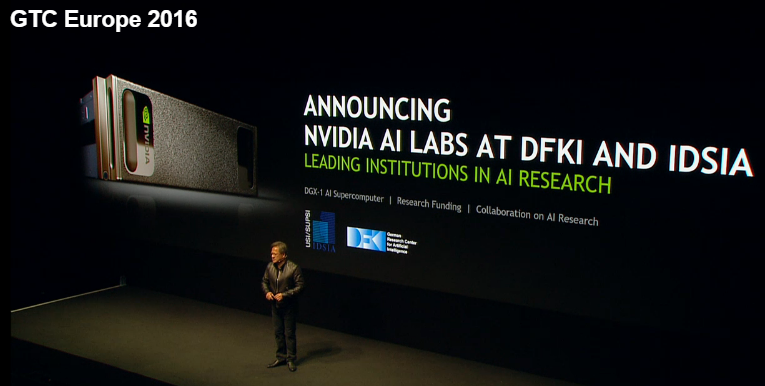
The DFKI team will use the funding and DGX-1 machine to further its mission in advancing basic research in deep learning and facilitating industrial knowledge transfer. The center’s current focus is on self-driving cars, multimedia opinion mining, emergency response and Industry 4.0. Likewise, IDSIA will use the NVIDIA collaboration to advance its work in machine learning, operations research, data mining, and robotics.
DGX-1 systems are also being installed at British AI startup BenevolentAI and the University of Reims Champagne-Ardenne’s high performance computing center. BenevolentAI will be using the system to advance drug discovery and related areas of healthcare and life science research (which we covered here in more detail). The University of Reims Champagne-Ardenne will be using the DGX-1 for its research into curing diseases affecting wine grapes, the basis for the region’s primary export.
German multinational software-maker SAP has also been brought into the GPU computing fold. Huang said the company will employ two DGX-1 systems, one each at its German and Israeli offices, to build machine learning applications for its enterprise customers. Given that SAP has about 320,000 of such customers and conducts business in 190 countries, this is a potentially lucrative development for NVIDIA, which sees machine learning as a greenfield opportunity in the enterprise.
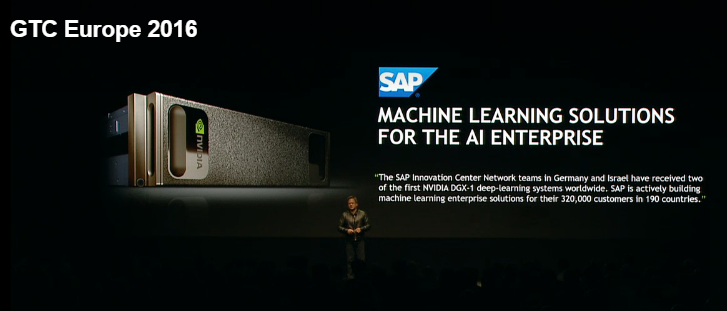
Another area that the GPU-maker is looking to score some big deals down the road is autonomous vehicles. At GTC, Huang previewed “Xavier,” the code name for an SoC that integrates a 512-core Volta GPU and an 8-core ARM CPU. The 20-watt chip is designed for deep neural network-based computer vision applications in self-driving cars. Xavier is intended to replace NVIDIA’s Drive PX 2 offering when it’s shipped to automakers, starting in the fourth quarter of 2017. Not much else was said about the internals of the new chip, except that it will use one-fourth the power of the current Pascal-based implementation and will supply 20 teraops of deep learning (8-bit) processing. As you can see from the image below, the Xavier board assembly occupies about half the space as the Drive PX 2.
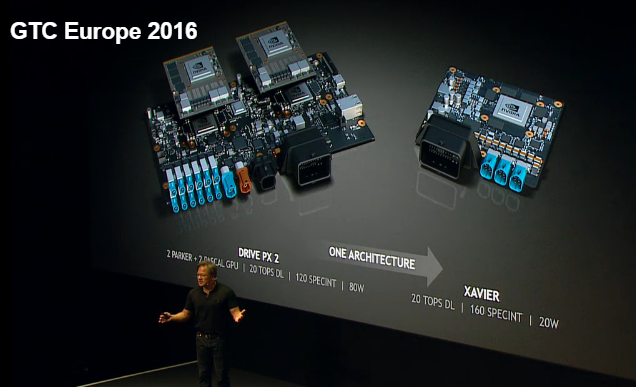
A much larger Volta GPU will supply most of the teraflops in the Department of Energy’s Summit and Sierra supercomputers, scheduled to be installed in late 2017. The pre-exascale machines will be built by IBM and powered by Power9 CPUs hooked up to Volta GPUs, and connected via NVLink. Volta is expected to be officially unveiled in May at NVIDIA’s main GTC event in Silicon Valley next year.
